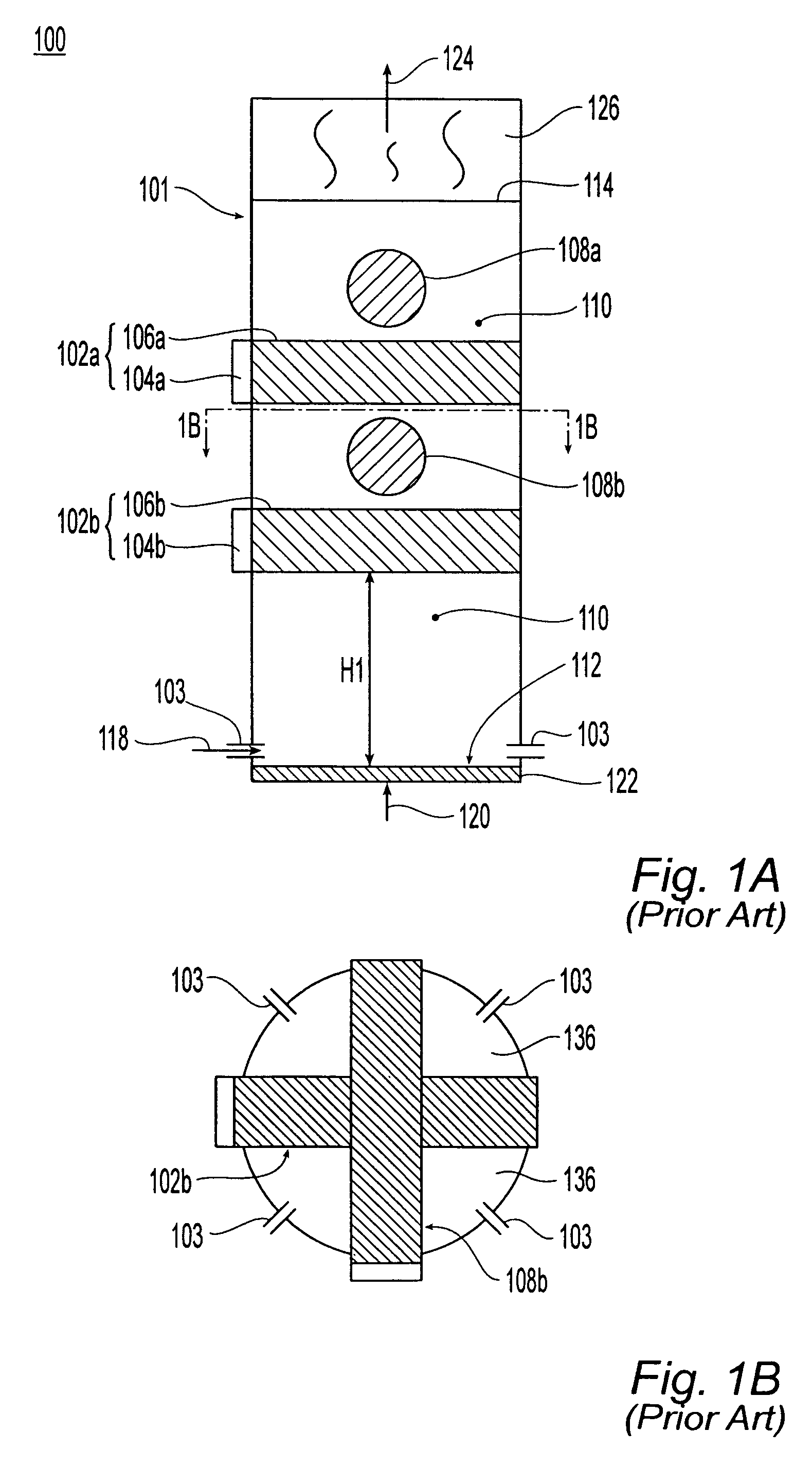Fluid bed reactor having vertically spaced apart clusters of heating conduits
a technology of heating conduits and flue beds, which is applied in the direction of muffle furnaces, bulk chemical production, furnaces, etc., can solve the problems of low heat supply, poor reactor performance, and starvation of feedstock injection regions
- Summary
- Abstract
- Description
- Claims
- Application Information
AI Technical Summary
Benefits of technology
Problems solved by technology
Method used
Image
Examples
Embodiment Construction
[0022] The contents of U.S. Pat. Nos. 5,059,404; 5,306,481; 5,353,721; 5,536,488; 5,637,192 and 6,149,765 are incorporated by reference to the extent necessary to understand the present invention.
[0023]FIGS. 3A and 3B show views of a fluid bed reformer 600 comprising a compartment 601 serving as a reaction vessel 602. As best seen in FIG. 3B, the reaction vessel 602 has a rectangular footprint (i.e., a rectangular shape in a horizontal cross-section) comprising two long sides 604A, 604B and two short sides 606A, 606B. A plurality of pulse heaters 608A, 608B pass through the long sides 604A, 604B of the reformer vessel 600. In one embodiment, the pulse heaters 608A, 608B are of a sort well known to those skilled in the art, such as those disclosed in U.S. Pat. No. 5,059,404, mentioned above. The resonance tubes 609 associated with these pulse heaters 608A, 608B serve as heating conduits for indirectly heating contents of the compartment 601.
[0024] The pulse heaters 608A, 608B are o...
PUM
| Property | Measurement | Unit |
|---|---|---|
| height H1 | aaaaa | aaaaa |
| height H2 | aaaaa | aaaaa |
| thickness | aaaaa | aaaaa |
Abstract
Description
Claims
Application Information
 Login to View More
Login to View More - R&D
- Intellectual Property
- Life Sciences
- Materials
- Tech Scout
- Unparalleled Data Quality
- Higher Quality Content
- 60% Fewer Hallucinations
Browse by: Latest US Patents, China's latest patents, Technical Efficacy Thesaurus, Application Domain, Technology Topic, Popular Technical Reports.
© 2025 PatSnap. All rights reserved.Legal|Privacy policy|Modern Slavery Act Transparency Statement|Sitemap|About US| Contact US: help@patsnap.com



